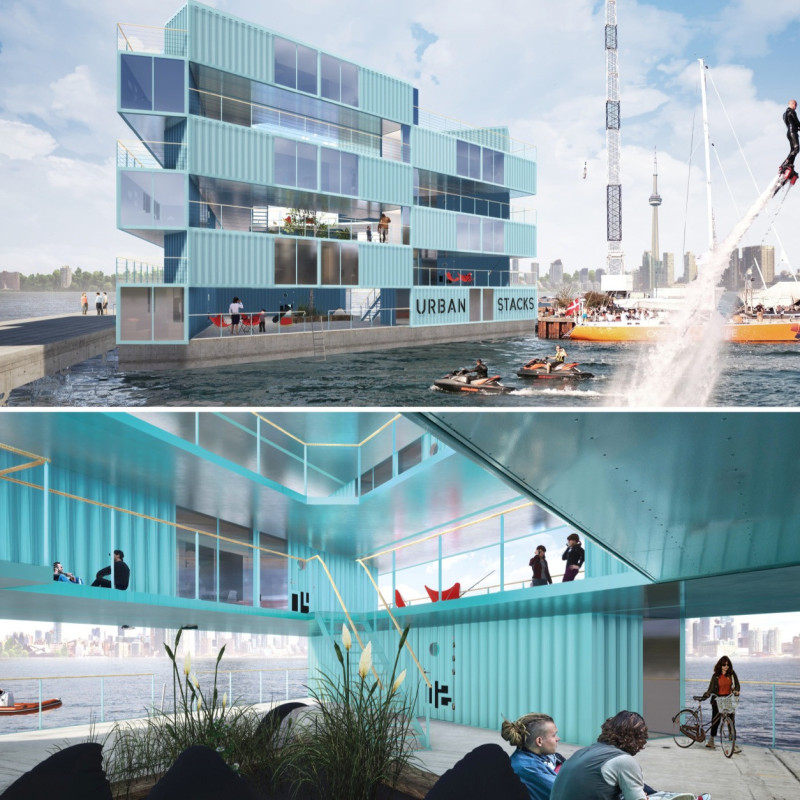5 key facts about this project
Modular Design and Functionality
Urban Stacks exemplifies a modular design strategy that allows for adaptability and flexibility, essential features in contemporary urban housing solutions. The project consists of stacked shipping containers organized into a series of triangular courtyards. These courtyards serve as communal areas where residents can engage with one another, supporting a sense of community within a dense urban environment. Each living unit is configured to maximize usable space, incorporating functional elements such as compact kitchens, multi-purpose furniture, and optimally placed windows for natural light.
The three distinct unit types cater to diverse demographic needs: student units designed for single occupants, professional units aimed at young professionals or couples, and communal spaces intended to encourage interactions. This multifaceted approach allows Urban Stacks to offer cohesive living environments tailored for different lifestyle requirements.
Sustainability and Materiality
The architectural design prioritizes sustainability through the use of recycled materials, with shipping containers forming the core structural elements. This approach not only reduces waste but also enables rapid construction timelines. Complementing the containers, architectural details include extensive glazing to offer panoramic views and enhance natural ventilation. Wood finishes are integrated into the design providing thermal comfort and visual warmth.
Green roofs and vertical gardens are essential components, introducing ecological elements that contribute to biodiversity and environmental integration. These features not only mitigate urban heat effects but also create inviting outdoor spaces for inhabitants, promoting ecological awareness within the urban context.
Exploration of Architectural Plans and Designs
Urban Stacks presents a compelling case study in urban architecture, merging innovative design with practical solutions for affordable housing. To gain deeper insights into its architectural strategies, readers are encouraged to explore the project's architectural plans, sections, and overall designs. The layout specifics and construction details provide an understanding of how this project meets urban needs while remaining mindful of sustainability and community engagement. Exploring these elements will further illustrate the importance of integrating design and function in a successful architectural model.























